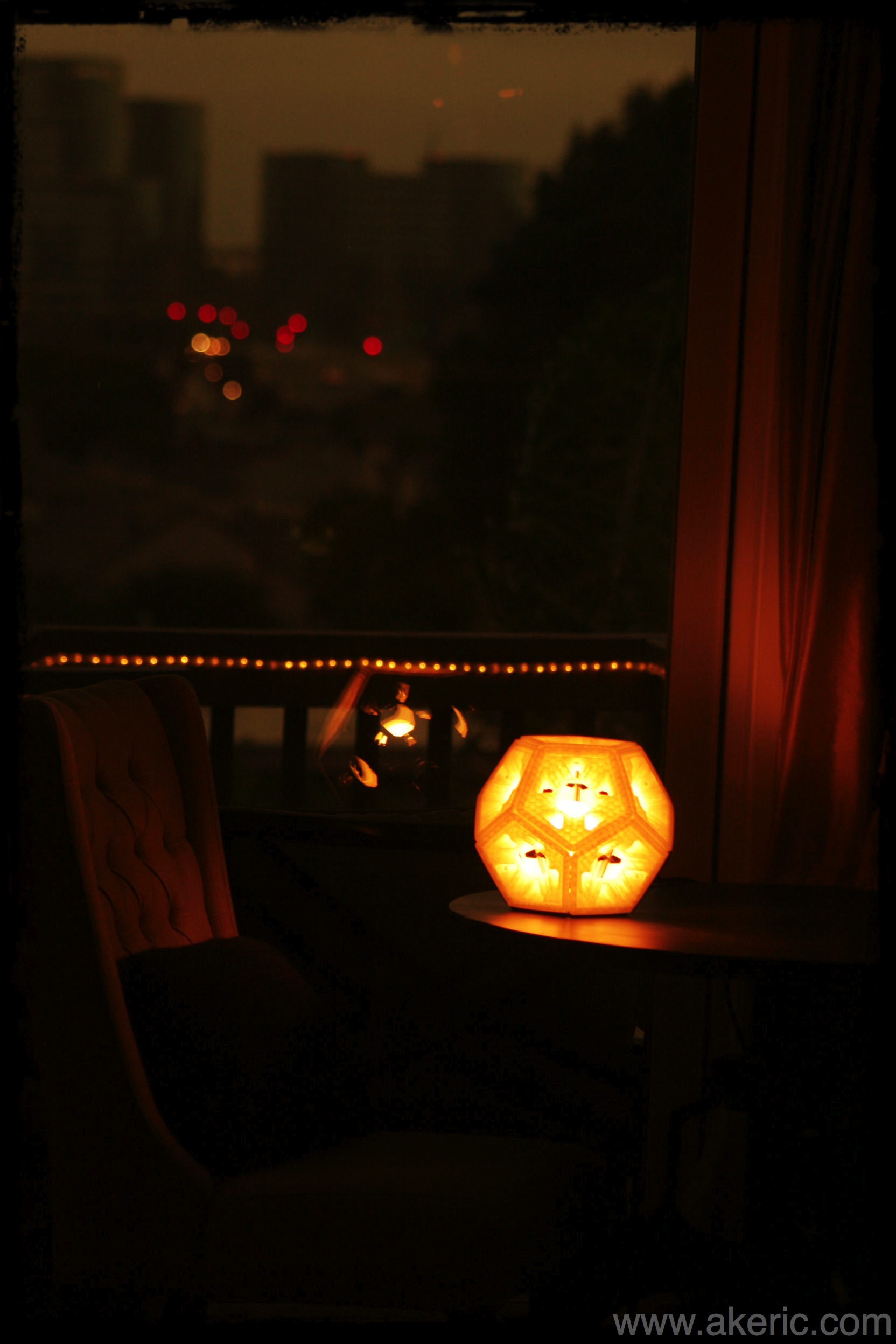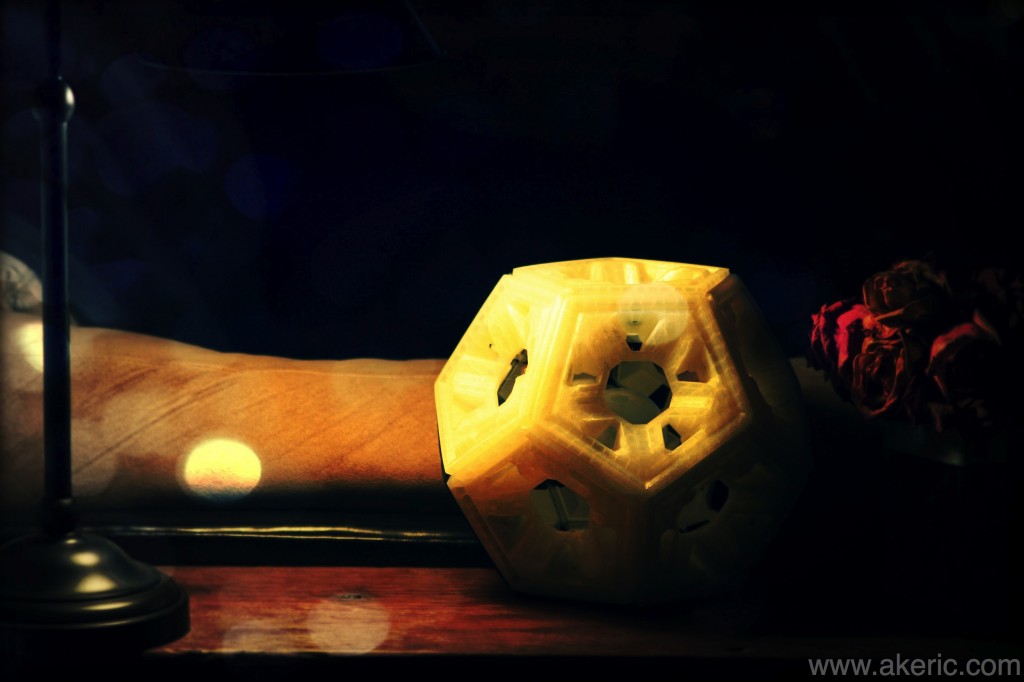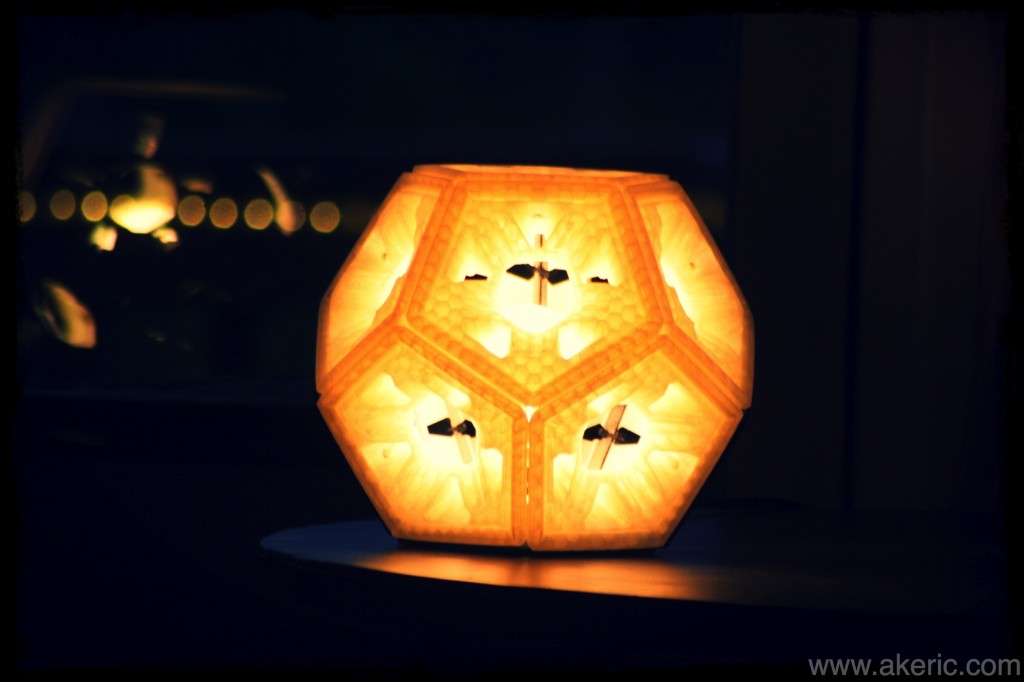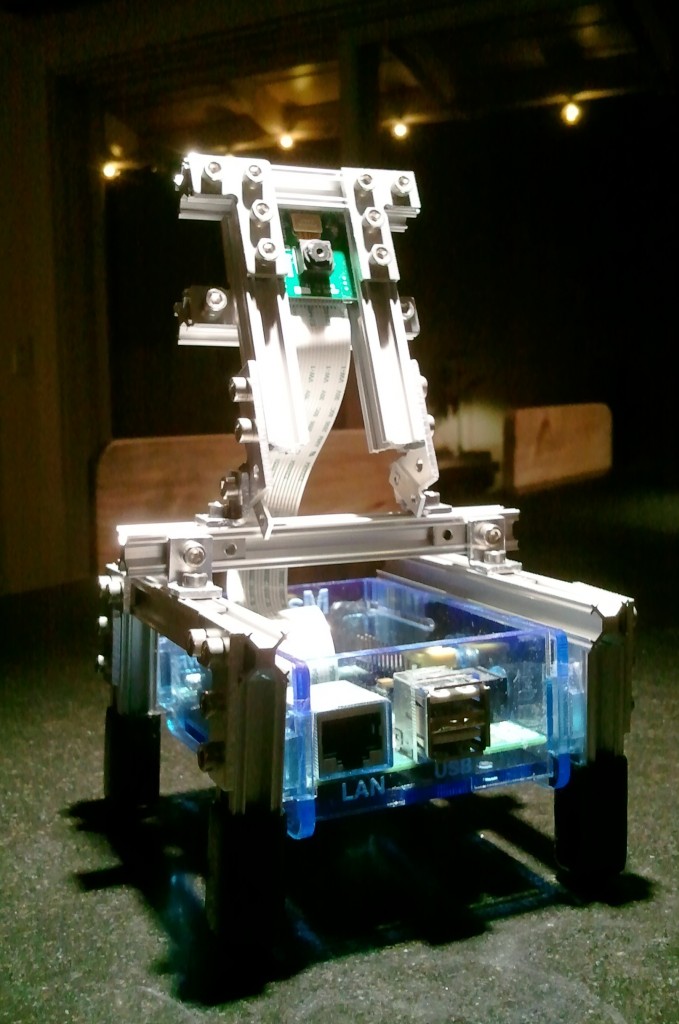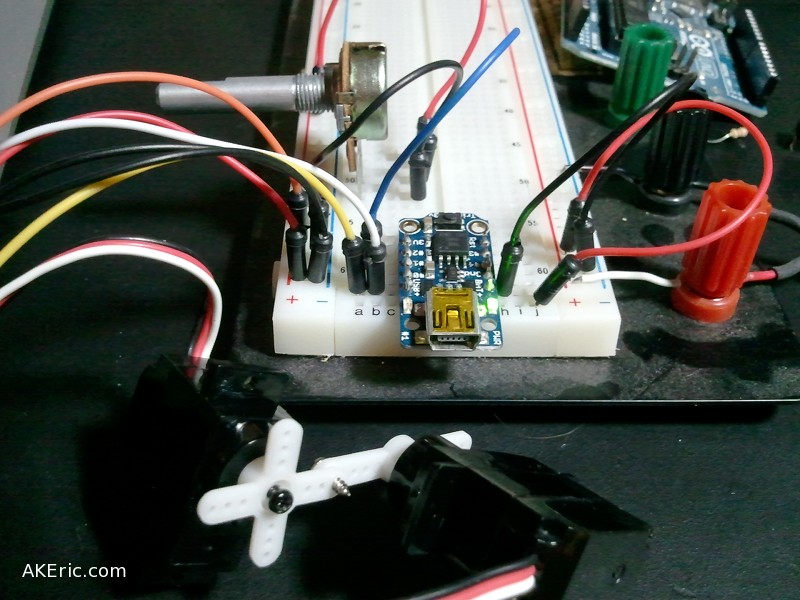Fun with Google Cardboard
A while back I’d read about Google Cardboard: A way to turn your Android smartphone into an “Oculus Rift Lite” VR system by shoving it in a cardboard box. I’d recently got a new Samsung Galaxy S5 and thought I’d give it a shot. While you can order the cardboard kit online, or even cut it yourself, I found this 3d printable design on Thingiverse that fit my phone. Several hours later I had my ‘3d printed cardboard’ (via my Makerbot Replicator 1). But I still needed the magnets, lenses, and optional NFC tag. Unofficial Cardboard had everything I needed (including the cardboard itself if I hadn’t printed it), and a few days later that showed up. Other than the lenses not quite fitting (which my Dremel grinder took care of by expanding the holes in the print), and having to jury-rig a head-strap out of some nylon scrap, it worked really well:
I used some sticky-foam around the nose & forehead, and inside the case for the phone to rest on. Added extra black tape on the sides to keep the light out.
I’ve had the chance to play with the first and second gen Oculus Rift’s as well, here’s my thoughts:
- Considering it’s a smartphone strapped to your head, it worked better than I expected.
- Doesn’t have the immersive feeling the Rift does: More like you’re looking through two small holes (well, you are) rather than being enveloped in the environment. But the resolution (at least that of my phone) seemed comparable to the Rift, or at least the first gen rift.
- Latency isn’t as good as the rift, but as a tech demo, seems good enough. Some apps are smoother than others.
- Couldn’t get the NFC tag to work.
- Works with glasses. The Oculus doesn’t, requires you to swap lenses (but this helps with its immersive environment).
- The official “Google Cardboard App” has a number of demos. The ones that impressed me are:
- Earth : I found myself unconsciously laughing while using this: Flying from space down to your house is something I’ve never experienced before. Way cool.
- YouTube: A 360 deg sphere of youtube vides to watch, with voice search. Reminds me of something from MTV in the 90’s.
- Windy Day: Stylized 3d short about forest animals and a hat.
The main problem I encountered was many apps require a bluetooth gamepad to navigate them. After much searching, I’ve had a really hard time finding one that is known to work without requiring root access to the phone. All the posts I find say “you need a bluetooth gamepad”, but give no examples. I went to Gamestop and purchased a Moga Pocket, but it looks like that controller only works with apps designed for it. I downloaded three different driver apps that support the Moga, and while they all recognized it, I couldn’t get it to interact with any of the Cardboard apps. Frustrating. Returned.
And, like on the Oculus, I do get a bit motion-sick after using it for a while. That’s probably the biggest hurdle that needs solved for any of this tech.
Overall, it has great ‘wow factor’ the first time you use it. I think it’ll be fun to show friends. Currently I see no killer app for it, or any reasons I’d want to use it for anything day-to-day. But I look forward to finding out what that may be 😉
Total cost (not counting the phone), about $16: Print, maybe $2-3 in materials. Unofficial Cardboard Kit: $12.75
Worth it? Absolutely.


